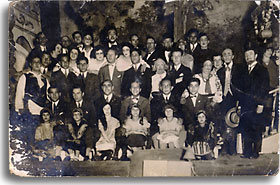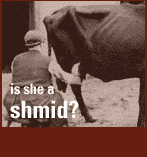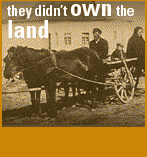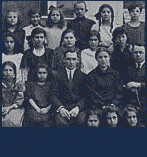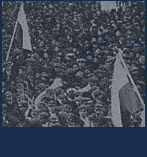

The Yiddish Theatre
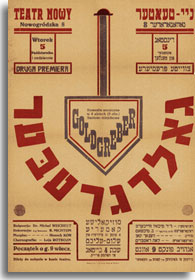

The Yiddish theatre has always been a thriving aspect of Yiddish culture. Founded by Avrom Goldfaden in 1876, the Yiddish theatre evolved from the performances of a small number of scrappy tavern singers into theatre troupes lead by serious thespians of great celebrity. Although it boasted examples of very sophisticated drama, Yiddish theatre abounded and abounds with musically driven plots, incorporating dance and physical humor, and inclining towards the melodramatic. Sometimes Yiddish playwrights looked outward and sought to replicate content that was popular on European and American stages-many of William Shakespeare's plays, for example, were translated into Yiddish and produced. At other times, serious playwrights sought to capture the drama of Jewish life, depicting the tensions between modernization and tradition, and between the generations, or were historical dramas that portrayed a chapter of Jewish History.
The most memorable plays generated for the Yiddish stage are ones that engaged Jewish life and the Jewish past, while forging a distinctly Jewish brand of creativity. The most beloved Yiddish opera among Yiddish-speakers is Goldfaden's Shulamis, a love story set against the backdrop of ancient Israel. The Yiddish drama best known to international audiences is S. Ansky's The Dybbuk. The Golem is yet another Yiddish drama embraced by the Yiddish community and beyond for its originally Jewish artistic themes. All three of these plays drew on Yiddish folklore: Shulamis incorporates folksongs, and its plot is based on a Talmudic legend; The Dybbuk is laced with beautiful Hasidic legends; and the legend of the Golem of Prague animates H. Leivick's modern drama.
Although it got its start in Rumania and Russia in the late 1870s, the Yiddish theatre found its most welcoming home in New York City as early as the 1880s. At its height of popularity, ten Yiddish theatrical shows were playing in different venues simultaneously in the New York area alone. In the 1920s and 1930s you also could have attended Yiddish theatre in Chicago, Philadelphia, Montreal, or Buenos Aires among many other cities in the New World. By the 1950s, as the flow of Yiddish-speaking immigrants to the United States slowed, and as linguistic assimilation quickened, a dwindling Yiddish community could only support a fraction of such Yiddish theatrical life. If you look closely you may still see evidence of this era's theatrical creativity on the streets of Second Avenue, a place that will forever be synonymous with Yiddish theatre.
Yiddish Press
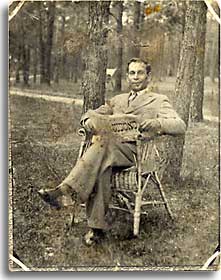

"Everyone read a Yiddish paper, even those who knew little more than the alef-bet. There were seldom many books in the average immigrant's home, but the Yiddish paper came in every day. After dinner, our family would leaf through it page by page, and sometimes my father would read some interesting items aloud. Not to take a paper was to confess you were a barbarian." Anonymous quote from Irving Howe's World of Our Fathers
The first sustained Yiddish newspaper was founded in Odessa in 1862 under the Hebrew title Kol mevaser (A Heralding Voice). Since that time over a thousand Yiddish periodicals were established throughout the world-some lasting only months, others for decades. They ranged in scope and size from the dailies that serviced large populations in major cities throughout Poland and Russia, to the more modest ones dedicated to narrow interests, like the Byalistoker shtime, produced by and for the small pool of immigrants from the city of Bialystok scattered throughout the United States who hoped to maintain a connection to their birthplace. Of course competing Yiddish newspapers often represented a gamut of political voices. Although the Yiddish newspaper took on many forms, and matured a great deal, there were and are enduring traits that many Yiddish newspapers shard with their early progenitor, Kol mevaser. The most important of these traits is the privileged place literature enjoyed in so many of the major Yiddish newspapers. No matter how pedestrian a newspaper was, or how much it was concerned with reporting on daily news, it often featured a serialized novel by a well-known Yiddish writer or perhaps a poem. Readers of many a Yiddish literary masterpiece first read it on the pages of a newspaper before it was issued as a regular book. Sholem Aleichem published his stories in the popular newspapers of his day, as did Nobel Laureate Isaac Bashevis Singer.
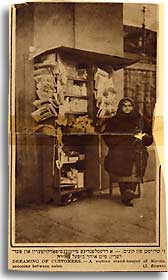

The Yiddish newspaper that made the most profound impression on Jewish life was the New York-based Jewish Daily Forward (Forverts). It was founded in 1897 by Abraham Cahan, an immigrant writer and journalist. Cahan wanted to help his immigrant readers adapt to life in America as quickly as possible, and, accordingly, his paper familiarized them with many aspects of American life as they related to current events. In this regard, he also took a personal hand in a very popular section of the newspaper, Bintel Brief (A Bundle of Letters), in which readers sent in questions, often about their new lives in America, and Cahan responded, providing practical advice. In one letter a girl in a factory, who was supporting her family of eight, asked how to cope with a foreman who made "vulgar advances." In another, a worker confessed that he scabbed during a recent strike because he needed money to buy medicine for his sick wife. The Forward also took on issues of social justice, defended the rights of the poor and working class and in general became the voice of the Jewish immigrant. By the 1930s, the Forward had become one of America's most important metropolitan dailies with a nationwide circulation topping 275,000. It is still in circulation today, published weekly in Yiddish, English, and Russian editions (Russian being the language of the latest Jewish immigrant population).









